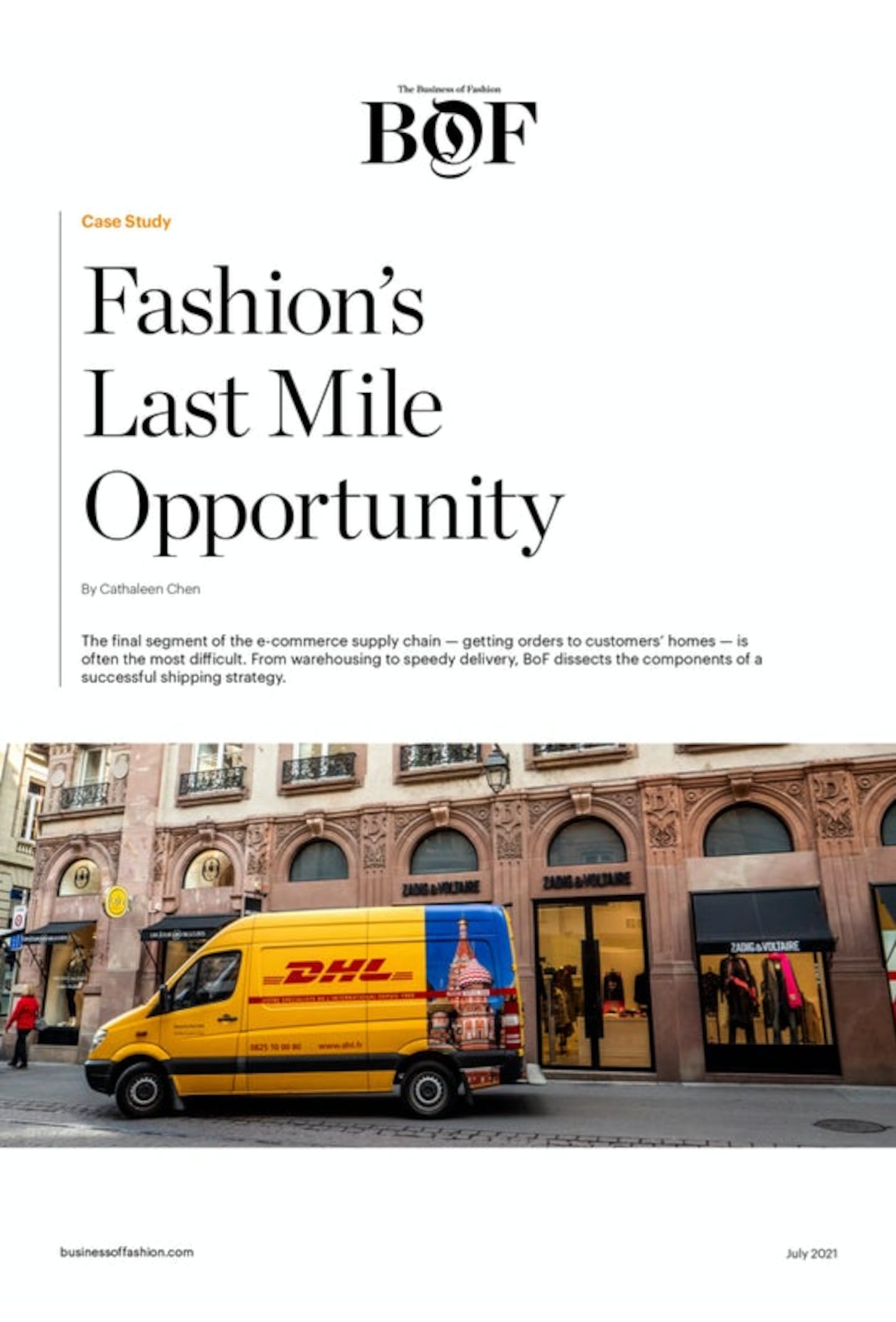
The Business of Fashion
Agenda-setting intelligence, analysis and advice for the global fashion community.

Agenda-setting intelligence, analysis and advice for the global fashion community.

E-commerce has always been an expensive endeavour. There’s online marketing, warehouse operations and, costliest of all, the process of getting orders to customers’ doorsteps — the headache-inducing “last mile.”
Strictly defined, the last mile is the final leg of an online order’s journey from a distribution centre or store to the customer’s home. It sounds simple, but it’s actually one of the most complicated elements of online retail. It requires meticulous inventory management to track down products and find the most efficient and cost-effective way to deliver them to customers, while also providing a service that’s as speedy and convenient as possible.
E-commerce giants like Amazon and China’s Alibaba and JD.com operate massive, sophisticated logistics operations with economies of scale and cutting-edge technologies that allow them to bring down the costs of these services and undercut rivals. These behemoths have set consumer expectations high with offerings of free shipping and next-day delivery. Most fashion retailers in western markets are years behind, and catching up will be a costly and formidable process.
 Opens in new window
Opens in new windowBut as consumer behaviour shifts online, tackling the challenge of the last mile has taken on new urgency. The pandemic was the final straw for many online shopping holdouts, pushing e-commerce to nearly 16 percent of total US retail sales in the second quarter of 2020 — up from just 10 percent in 2019, according to US Census Bureau data. And as consumers have increased their digital spend, their expectations of online service have also grown. Meanwhile the resources that facilitate a seamless last-mile service are tighter than ever: Available warehouse space is scarce, especially in key distribution zones near ports and major cities. Carriers are stretched thin and pass along rising costs to brand clients in the form of surcharges and shipping delays.
ADVERTISEMENT
Consumers have little sympathy. Shoppers today expect their purchases to arrive faster, the costs of shipping waived, and for their returns to be free, too — especially when Amazon makes it look so easy.
In an increasingly competitive retail environment, acing the last mile offers more than a competitive edge; it’s a vital act of survival. Speed, transparency and convenience at every step of the shopping journey are critical differentiating factors that sway consumers from one retailer to another. A seamless experience receiving and returning orders can garner lifelong loyalty among customers.
This case study examines how brands can conquer the last mile. The first part identifies the four factors that enable this section of the supply chain: inventory management, order distribution, delivery and customer service. The second part breaks down four unique solutions adopted by four very different retailers: Revolve, Zara, Farfetch and Salvatore Ferragamo.
The goal is not to recommend a single strategy, but to identify the key challenges and different approaches to address them. Every brand must tailor its last-mile blueprint to its distinct business model and customer demographic.
Click below to read the case study now.
Nordstrom, Tod’s and L’Occitane are all pushing for privatisation. Ultimately, their fate will not be determined by whether they are under the scrutiny of public investors.
The company is in talks with potential investors after filing for insolvency in Europe and closing its US stores. Insiders say efforts to restore the brand to its 1980s heyday clashed with its owners’ desire to quickly juice sales in order to attract a buyer.
The humble trainer, once the reserve of football fans, Britpop kids and the odd skateboarder, has become as ubiquitous as battered Converse All Stars in the 00s indie sleaze years.
Manhattanites had little love for the $25 billion megaproject when it opened five years ago (the pandemic lockdowns didn't help, either). But a constantly shifting mix of stores, restaurants and experiences is now drawing large numbers of both locals and tourists.